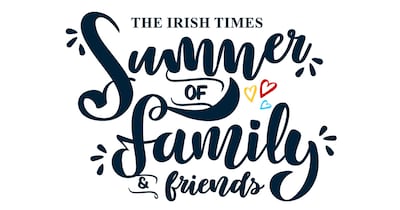
No matter what your age, start with the 5km parkruns and take it from there, suggests Anne Gormley of the Irish Master Athletes Association. These free, timed events every Saturday morning are an introduction to age grading, with the results showing where you’ve come in your age category, while you’re pushing yourself for a personal best. You have to be a member of an affiliated Athletics Ireland club to compete in masters competitions. “It’s to do with insurance,” says Gormley, who runs with Donore Harriers in Chapelizod, Dublin. But don’t think clubs are only for elite runners, “everyone is treated on the same level”, she stresses. To keep racing fit over the decades, “listen to your body” is the unanimous advice. Don’t be afraid to take days off running.
“Master athletes can reduce the chances of injuries, prolong their running career and improve performance by training smart,” says neuromuscular therapist Andrii Mahin. The emphasis needs to be “on manageable workloads, having adequate recovery, patience in your progression, listening to your body”. Proper warming up before and cooling down after a training session is important in staying injury free, and training should never have dramatic increases in workload.
“Weight training and plyometrics [ie exercises that involve jumping or explosive movement] when properly performed can help maintain muscle mass as we age and reduce the risk of early osteoporosis,” says Mahin, who works with high performance athletes, young and older, at his neuromuscular therapy and sports injury clinic in Beaumont, Dublin.
“It’s important to get sufficient sleep, hydration, nutrition and regular neuromuscular therapy treatments. Dry needling and cupping are also great tools in helping the body to recover from hard training sessions.”
READ MORE
Overuse injuries to calves and shins are common among masters athletes, as well as the usual work/life/sport-related stresses and strains affecting the lower back and hips, he explains. For example, spending long hours sitting down in the same position while working, and then getting up and going for a training session.
“By changing your position or walking about regularly and simply doing five to seven minutes of stretches for your hips/lumbar and thoracic spine, neck and shoulders, you can make a huge difference in postural alignment and wellbeing,” he adds.
Michelle Kenny (43) has learned the hard way that recovery takes longer as you age. She suffered stress fractures through pushing herself too hard and has since reduced her weekly mileage, finding that her times are still improving, as long as she takes the down time.
“I am doing everything I can to keep going; taking a weekly or fortnightly massage to stretch out the legs and running on grass will save you.” She also swears by salt water, having had an Epsom salt bath after the morning trail run on the day we speak. “If you can’t go into the seawater and walk up and down, that’s the next best thing.”
Her 72-year-old mother Eileen also swears by the restorative power of water. Living in Athlone, she does aqua aerobics in a hotel swimming pool and uses the jets there to relieve her legs. If you feel an ache or a pain, “take a day off, and run up and down in the water”.
You can always go for a walk or cycle instead, she adds.














